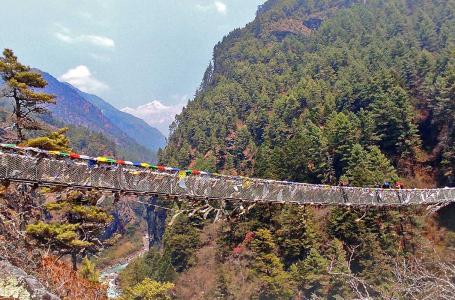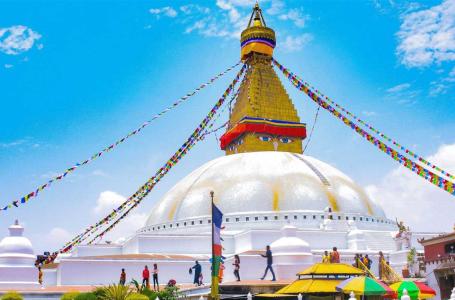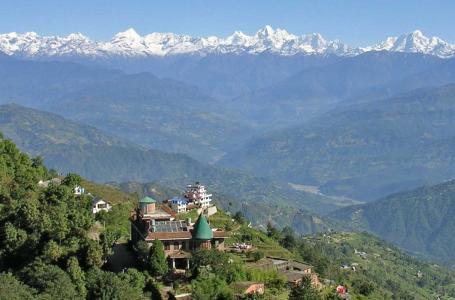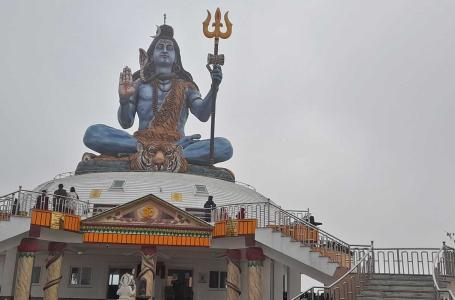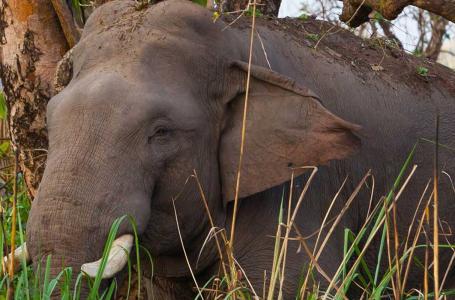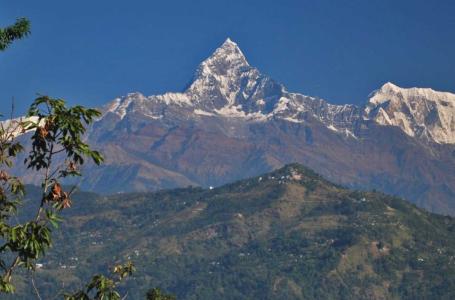Yala Peak Climbing is a prime choice for those seeking a thrilling yet accessible mountaineering experience. Located in the Langtang region of Nepal, Yala Peak stands at 5,520 meters, making it an excellent introduction to high-altitude climbing. Perfect for beginners, this trek blends easy-to-navigate paths with awe-inspiring views of the Himalayan ranges. The route is filled with diverse terrain—ranging from lush forests and traditional villages to the spectacular snow-covered peaks of Langtang Lirung, Dorje Lakpa, and Shishapangma in Tibet.
As part of your Yala Peak Climbing adventure, you will not only witness remarkable landscapes but also immerse yourself in the vibrant culture of the local Tamang communities, who have inhabited the region for centuries. From ancient monasteries to local traditions, Yala Peak offers an unforgettable cultural and spiritual experience.
For trekkers seeking similar experiences, the Langtang Valley Trek is another option within the Langtang region, known for its scenic beauty and rich cultural offerings. Both treks provide excellent opportunities for trekking in Nepal while exploring the natural and cultural wonders of the Himalayas.
The journey to Yala Peak begins from Syabrubesi, a small village that marks the start of the Langtang Trek. The first few days are spent trekking through dense forests, crossing suspension bridges, and passing by traditional Tamang villages. As you ascend through these picturesque landscapes, you’ll be welcomed by stunning views of Langtang Lirung, the highest peak in the region. Or, if you are just willing to explore the Tamang Heritage Trail, you can check out our Langtang Tamang Heritage Trek dedicated to exploration of Tamang villages.
Along the way, trekkers will stay in simple teahouses that offer basic accommodation and local meals, providing a genuine insight into life in the mountains. At higher altitudes, near the Yala Peak base camp, tented camps are set up to offer climbers a closer connection with the wilderness and allow them to acclimatize for the summit push.
While trekking through the Langtang National Park, trekkers will also be surrounded by an abundance of flora and fauna, including red pandas, wild boars, and various species of Himalayan birds. The views from higher altitudes, with panoramic vistas of the Annapurna, Langtang, and Gauri Shankar ranges, make the trek incredibly rewarding.
For more information on Langtang National Park and its unique biodiversity, check out our detailed guides.
Yala Peak is often considered an excellent choice for beginner climbers because of its non-technical nature. Unlike other peaks in the region, it does not require advanced mountaineering skills such as ice climbing or glacier navigation. The ascent to the summit involves straightforward trekking with the use of basic climbing gear such as ice axes and crampons, which are generally provided by trekking agencies or local guides depending on your package.
However, while the climb itself is considered non-technical, it’s still important to be prepared for high-altitude trekking. Prior to your Yala Peak adventure, it’s highly recommended to engage in physical preparation, including strength training and cardiovascular exercises. This will ensure that you can comfortably handle the altitude and challenging conditions on the climb. Additionally, hiring a local guide is essential for safety, navigation, and overall support throughout your expedition.
The most favorable seasons for Yala Peak climbing are during the spring (April-May) and autumn (September-November) months. During these periods, the weather is stable, skies are clear, and temperatures are mild, making for optimal climbing conditions. Spring brings vibrant greenery and blooming flowers, while autumn offers dry trails and crisp air after the monsoon season.
Both seasons offer stunning views of the surrounding mountains, including Langtang Lirung, and ensure clear visibility, making the climb not only more enjoyable but also safer. Although winter (December-January) and monsoon (June-July) seasons are not recommended for trekking or climbing, the spring and autumn seasons offer the best balance of conditions for a successful summit.
For more insights into the best time to visit Nepal for treks and climbs, refer to our seasonal trekking guide.
Successful Yala Peak Climbing involves careful planning and preparation. Here are some essential aspects to consider:
For complete information on required trekking permits and how to obtain them, be sure to check out our guidelines.
Accommodation along the Yala Peak climb will vary based on altitude. In the lower regions, such as Syabrubesi and Langtang Village, trekkers will find basic teahouses that offer shared rooms and local meals. As you ascend, the number of teahouses reduces, and camping becomes more common.
The meals provided in teahouses and camps primarily consist of dal bhat, rice, vegetables, and noodles. As you approach the base camp, the food options may become more limited, so it’s advisable to carry snacks like energy bars and electrolyte tablets for emergencies.
For a more comfortable stay, our agency can assist with the accommodation booking based on your preferences.
Your adventure begins with your arrival in Kathmandu, the vibrant capital city of Nepal. Upon arrival, you will be greeted by our team and transferred to your hotel. Take the remainder of the day to relax and recover from your journey, soaking in the atmosphere of this culturally rich city.
Today is dedicated to exploring the cultural treasures of Kathmandu Valley. Embark on a guided sightseeing tour to UNESCO World Heritage Sites such as Swayambhunath Stupa, Pashupatinath Temple, Boudhanath Stupa, and Kathmandu Durbar Square. Immerse yourself in the rich history, architecture, and spirituality of these iconic landmarks.
After breakfast, embark on a scenic drive from Kathmandu to Syabrubesi, a picturesque village located at the starting point of your trek. Enjoy breathtaking views of the Himalayan landscape as you journey through winding mountain roads. Upon reaching Syabrubesi, settle into your accommodation and prepare for the trek ahead.
Begin your trekking adventure by following the trail alongside the Langtang River, passing through lush forests and charming villages. Trek to Lama Hotel, a cozy stopover nestled amidst the serene natural surroundings of the Langtang region. Enjoy a warm meal and a restful night's sleep in preparation for the days ahead.
Continue your trek towards Langtang Village, traversing through scenic landscapes adorned with rhododendron forests and alpine meadows. Along the way, catch glimpses of the towering peaks of the Langtang Himalayas. Arrive at Langtang Village, a vibrant settlement inhabited by friendly locals, and immerse yourself in the unique culture and traditions of the region.
Embark on a picturesque trek to Kyangjin Gompa, a renowned Buddhist monastery nestled amidst the majestic Himalayan peaks. Follow the trail as it gradually ascends, offering breathtaking views of snow-capped mountains and glacial valleys. Upon reaching Kyangjin Gompa, take in the tranquil atmosphere and explore the monastery and surrounding areas.
Take a well-deserved rest day in Kyangjin Gompa to acclimatize to the high altitude and rejuvenate your body for the challenges ahead. Alternatively, embark on an exploration hike to nearby vantage points or visit the famous Cheese Factory, where you can sample delicious local cheeses made by the monks.
Begin your ascent towards Yala Peak Base Camp, situated at an altitude conducive to further acclimatization and preparation for the summit push. Set up camp at the Base Camp, surrounded by stunning Himalayan vistas, and spend the night under the starlit sky, anticipating the adventure that lies ahead.
Today is dedicated to honing your climbing skills and acclimatizing to the high altitude conditions. Engage in a climbing clinic practice session led by experienced guides, where you'll learn essential techniques and safety procedures for the summit climb. Take ample rest and acclimatization breaks to ensure your readiness for the summit attempt.
Rise early before dawn to embark on the exhilarating ascent towards the summit of Yala Peak, standing at an impressive height of 5500 meters. Equipped with necessary climbing gear and under the guidance of expert Sherpa climbers, navigate through rocky terrain and snow-covered slopes towards the summit. Reach the summit of Yala Peak, where you'll be rewarded with panoramic views of the Langtang Himalayas and beyond. Descend carefully back to Kyangjin Gompa, celebrating the successful summit and cherishing the memories of the climb.
Bid farewell to Kyangjin Gompa as you begin your descent towards Lama Hotel and eventually Syabrubesi. Trek through familiar trails, relishing the breathtaking mountain scenery one last time. Upon reaching Lama Hotel and Syabrubesi, unwind and reflect on the incredible journey you've undertaken over the past few days.
Continue your descent towards Syabrubesi, the final destination of your trek. Follow the trail as it winds through picturesque landscapes, passing through quaint villages and terraced fields. Arrive at Syabrubesi, where you'll spend the night, reminiscing about the experiences and adventures of the past days.
Conclude your Yala Peak climbing expedition with a scenic drive back to Kathmandu. Bid farewell to the mountains as you journey through winding mountain roads, enjoying the last glimpses of the majestic Himalayan peaks. Upon reaching Kathmandu, transfer to your hotel and take the remainder of the day to relax and reflect on the unforgettable memories created during your trek.
Trip Start and End Point
Kathmandu / Kathmandu
| DATES | STATUS | PRICE | SPACE LEFT | ||||
|---|---|---|---|---|---|---|---|
|
Start date: 21-May, 2025
End date: 03-Jun, 2025 |
Guaranteed | USD 1650 |
1
|
Book Now | |||
|
Start date: 15-Jun, 2025
End date: 28-Jun, 2025 |
Guaranteed | USD 1650 |
2
|
Book Now | |||
|
Start date: 16-Sep, 2025
End date: 29-Sep, 2025 |
Guaranteed | USD 1650 |
2
|
Book Now | |||
|
Start date: 25-Oct, 2025
End date: 07-Nov, 2025 |
Guaranteed | USD 1650 |
2
|
Book Now | |||
|
Start date: 07-Nov, 2025
End date: 20-Nov, 2025 |
Guaranteed | USD 1650 |
2
|
Book Now | |||
|
Start date: 27-Nov, 2025
End date: 10-Dec, 2025 |
Guaranteed | USD 1650 |
1
|
Book Now | |||
For Head
· Balaclava that covers your ears
· Headlamp with extra batteries and bulbs
· Bandana or headscarf, very useful for dusty conditions
· Beanie
· Wide brimmed sunhat
· Neck gaiter or warmer
· Snow goggles and Sunglasses with UV protection (carry an extra pair in case you lose or break it)
· Prescription sunglasses (if required)
For Upper Body
· T-shirt (moisture absorbing and breathable)
· The thermal base layer of merino wool
· Fleece wind-stopper jacket or pullover
· Waterproof (preferably breathable fabric)
· Long sleeve shirt (moisture absorbing and breathable)
· Shell jacket
· Down Vest
· Expedition weight insulated down jacket with hood (not required for all trekking peaks )
· Gore-Tex jacket with hood, waterproof and breathable
For Hands
· A pair of lightweight poly-liner gloves or lightweight wool or fleece gloves
· Summit Mittens (warm insulated gloves with safety straps)
For Lower Body
· Lightweight thermal leggings of merino wool
· Trekking trousers (waterproof, breathable fabric)
· Hardshell trousers
· Non-cotton underwear briefs
· Hiking shorts
· Synthetic insulated pants
For Feet
· Crampons
· Lightweight inner socks, heavy poly or wool socks and cotton socks
· Running shoes and rubber sandals/flip-flops
· Double insulated climbing boots
· Good quality hiking boots (sturdy soles, water-resistant, ankle support, “broken-in”)
· Gaiters
For Sleeping Purpose
· Sleeping Bag ( a 5 season sleeping bag, suitable for temperatures for as low as -40°C)
· Foam pad
· Fleece sleeping bag liner
· Therm-a-Rest sleeping pad (NeoAir XTherm) which offers insulation and warmth in sub-freezing temperatures
· Pillowcase
Personal Climbing Gears
· Ice axe
· Crampons
· Ascender/Jhumar
· Prusik rope
· Helmet
· Harness
· Tape slings (2)
· Screwgate karabiners (2 locks, 2 unlock)
· Descender/eight figure
· Plastic mountaineering boots
Group Climbing Gears
· Snow bar
· Rope
· Ice hammer
· Ice screw
Baggages
· Rucksack and Travel Bags
· A small daypack/backpack(30-40L) for carrying your valuables should have good shoulder padding.
· Large duffel bag (80-100L)
· Small padlocks for duffel-kit bags
· Waterproof covers
Medical
· Small, personal first-aid kit (simple and light)
· Paracetamol
· Cough and/or cold medicine
· Anti-altitude sickness pills - Diamox or Acetylzolamide
· Stomach antibiotic - Ciprofloxacin, etc. Do not bring sleeping pills as they are a respiratory depressant.
· Aspirin, first-aid tape, and plasters (Band-Aids)
· Skin-blister repair kit
· Anti-diarrhea pills
· Throat lozenges
· Water purification tablets or the water filter
· Earplugs
· lip guard
· Eye drops
· Extra pair of prescription glasses, contact lens supplies
· Sunscreen
Practical Items
· Alarm clock/watch
· Camera with extra SD cards and batteries
· Large Ziploc bags
· 2 water bottles (1 liter each)
· Small roll of repair tape, sewing-repair kit
· Binoculars (optional)
· 4 large, waterproof, disposable rubbish sacks
· Socket adapter Type C (with circular pins)
· Cigarette lighter / small box of matches
· Compass or GPS(optional)
· Lightweight steel thermal bottle
· Small folding or Swiss knife
· Trekking poles(foldable)
Toiletries
· Small sachets of shampoo
· Deodorants
· Nail clippers
· Face and body moisturizer
· Female hygiene products
· Small mirror
· Medium-sized quick-drying towel
· Toothbrush/paste (preferably biodegradable)
· Multipurpose soap (preferably biodegradable)
Personal Hygiene
· Anti-bacterial handwash
· Hand sanitizer
· Pee Bottle (1 litre, leak-proof, wide mouth)
· Pee funnel (for female)
· Wet wipes (baby wipes)
· Tissue /toilet roll
Extras/Luxuries
· Reading book
· Trail map/guide book
· Journal and pen
· iPod
· Playing cards (to help you pass the time at teahouses and/or camps)
· A modest swimsuit
· Binoculars (optional)
The best time to climb Yala Peak is during the spring (April to May) and autumn (September to November) seasons. These months offer clear skies, stable weather, and breathtaking mountain views, making the ascent safer and more enjoyable.
Yala Peak is a non-technical climb, making it ideal for beginners. While no previous mountaineering experience is required, you should have good physical fitness and acclimatize properly before the summit.
Yes, you will need a Yala Peak climbing permit, Langtang National Park Entry Permit, and a TIMS card. These are essential for legal access and safety tracking in the region.
The Yala Peak Climbing itinerary usually takes 12 to 14 days, including acclimatization, trekking through the Langtang region, and the summit day. The trek starts from Syabrubesi, a 7–9 hour drive from Kathmandu.
Yes, Yala Peak is considered safe for beginners when guided by a licensed, experienced local climbing guide. Make sure to travel with proper gear, adequate insurance, and follow all safety protocols.
Along the route, you’ll find basic teahouses offering traditional meals and shared rooms. Near the base camp, tented camping is common. It's recommended to go with a registered trekking agency for logistics and support.
Solo Yala Peak climbing is not recommended. For safety and compliance with local regulations, it’s best to climb with a registered guide or trekking agency, especially due to altitude and terrain challenges.
You’ll need mountaineering boots, crampons, ice axe, harness, helmet, and warm clothing. Trek Mania Nepal provides gear rentals by including them in the package. However, you can customize the package on your own.
Yala Peak stands at 5,520 meters (18,110 feet) above sea level. It offers spectacular views of Langtang Lirung, Dorje Lakpa, and even Shishapangma in Tibet.
Absolutely! Yala Peak offers a perfect mix of adventure, culture, and stunning Himalayan scenery—all without the need for technical climbing experience. It’s one of the best beginner peaks in Nepal.

